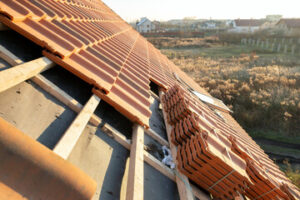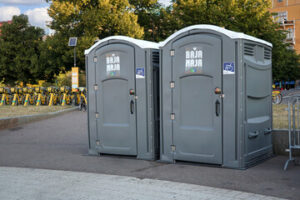Construction Site Security Cameras help prevent robberies and other incidents that can lead to financial strain or loss. Business owners can also use security cameras to monitor employees to ensure they are performing their job properly.
Smart security cameras connect to the internet and can be viewed via website or smartphone apps. Some even integrate with voice assistants like Alexa or Google Assistant for added control.

Security cameras have the power to discourage wrongdoers in a number of ways. The simple act of a camera being visible to intruders is enough to send the message that you’re actively watching your property and are not to be trifled with. This deterrent effect is further amplified by smart security camera features that can display real-time faces of criminals who have committed crimes, or even play pre-recorded audio alerts to warn people off your property.
A camera’s ability to respond to motion is another core feature that determines its effectiveness as a deterrent. Many security cameras allow you to set up notifications that will activate a siren or sound an alarm if certain parameters are met. This active response is designed to scare away intruders and may be particularly effective if your security camera is placed near entry points or on the property line.
The smartest security cameras are able to go beyond just recording and can react to suspicious movements by sending you an alert and activating your alarm system. For example, the Optiview IP5MPTZ-4XAD-NCV has intelligent motion detection that is able to distinguish between humans and vehicles, or even a shadow or tree moving against the background. It can then compare this shape to thousands of shapes already stored in its database to determine if it is a human or a vehicle, or just an everyday movement.
If you choose to receive an alert from your security camera, the device can even notify local law enforcement by displaying a live stream and audio of the intruder on your mobile app. It can also use two-way talk to communicate with any intruders you can see, or if they are particularly threatening, the camera can trigger its built-in 105-decibel siren to draw attention and scare them away.
In addition, many home and business owners have reported that their security systems have successfully stopped package thieves, burglars, vandals, or any other unwanted intruders. In some cases, these stories have gone as far as to catch the intruders in the act and have led to them being arrested.
Detection
When a camera detects motion in its field of view, the camera will either start recording or send you an alert. This helps homeowners monitor what happens at home when they are away. The detection capability of security cameras is one of their biggest selling points. Without it, you would have to constantly keep an eye on a live feed, which is impractical.
Aside from its monitoring capabilities, motion detection also contributes to energy efficiency. It ensures that cameras only record when there is movement in their fields of view, thus reducing power consumption. This can help reduce your energy bills and your carbon footprint.
Motion detection is available for both wired and wireless systems, making it a viable option for any type of home or business surveillance needs. Depending on the nature of your home, you can choose from various motion-activated recording options, such as continuous, event, or scheduled recordings. For businesses, you may want to consider event-triggered recording instead, which is ideal for areas that only require recording when a person is present.
The detection capabilities of a security camera are dependent on its sensor technology and camera lens. For example, PIR (passive infrared) sensors are able to detect motion by sensing heat changes in an environment. However, they do not work through glass and cannot detect motion inside a car or a building.
Another sensor technology used in security cameras is microwave. This sensor can sense radio frequencies that are emitted by wireless cameras, as well as electrical signals in wired cameras. However, it is important to note that this method of detection is not foolproof and can be prone to false alarms.
Moreover, it is important to properly position a security camera for best results. You should make sure that the camera has a clear line of sight to the area you want to monitor. Obstructions or improper placement can affect the camera’s ability to detect and respond to motion.
It is also important to check that the camera has a stable power supply and network connection. If your camera is not functioning, try resetting the password or re-installing the app. If the problem persists, you can always contact a professional for assistance.
Recording
Many security cameras record video footage, and they can also record audio. Whether a camera records sound depends on the camera and its setting. Some cameras may not record any sound at all, while others can pick up sound up to a certain distance depending on the quality of the microphone and the surroundings.
In most cases, a security camera will delete or overwrite old footage after a set retention period. This helps free up storage space and ensures compliance with data protection and privacy regulations. However, some businesses might need to retain footage for longer than the standard retention time. For example, banks and financial institutions might need to keep recordings for months or even years.
Security cameras can record footage locally on a device, or remotely on the cloud. Cloud storage offers greater reliability, as it is stored offsite and not susceptible to connectivity issues or physical tampering. However, cloud storage is usually more expensive than local storage.
Some cameras have built-in SD card slots for local storage. This allows for quick and easy access to footage, but the capacity of a single SD card is limited and may be overwritten with new recordings. Additionally, these cameras are susceptible to technical problems like hard drive failures and require continuous internet access.
Most cameras will have a red indicator light when they are recording. Look for this light on the camera itself or any on-screen indicators in the live view. Alternatively, you can check for a red light on the recording device connected to the camera. These devices, called NVRs and DVRs, are common for security systems that connect to a central server.
Some security systems use loop recording, where old footage is automatically overwritten by new footage as soon as the device reaches its storage limit. This option helps save on storage costs and is more efficient than manually clearing old recordings. It’s important to note, however, that loop recording can also cause the loss of important evidence in the case of an incident. For this reason, it’s advisable to use a separate hard drive for long-term archiving.
Monitoring
There are a few factors to consider when purchasing a security camera. One of the most important is whether it is able to be monitored remotely. This can be done via a mobile app or computer. Many of these cameras can also be triggered by a motion sensor or doorbell. This allows you to see what is going on around your home, even when you are not there. This is particularly useful if you have pets or children that are not well behaved.
A second factor to consider is the camera’s connection to the Internet. It is essential to make sure that your security camera cannot be hacked into by unscrupulous individuals. There have been a number of high-profile hacks that have impacted people’s privacy in recent years. Wireless cameras can be more susceptible to this than wired ones, although if you have a router that has good security features, this is not as much of an issue.
The third factor to consider is whether the camera has two-way audio. This will allow you to speak with someone in the camera’s field of view, which can be helpful if something unexpected happens. Some cameras can also be triggered by a built-in siren, which is a great way to scare away unwanted visitors.
Lastly, the camera should have a good field of view. The wider the field of view, the easier it will be to see activity. Some cameras have a wide-angle lens that provides a full panoramic view, while others have a zoomed-in feature that is ideal for focusing on specific areas.
Some security cameras come with features that can improve their functionality, such as edge-based video analytics and facial recognition software. These technologies can help detect and identify people in a camera’s field of view, which can reduce the time it takes to investigate incidents. Other features that can enhance a security camera include night vision and the ability to integrate with smart home devices. Many security system companies offer their own cameras, and these are typically more advanced than standalone models.








